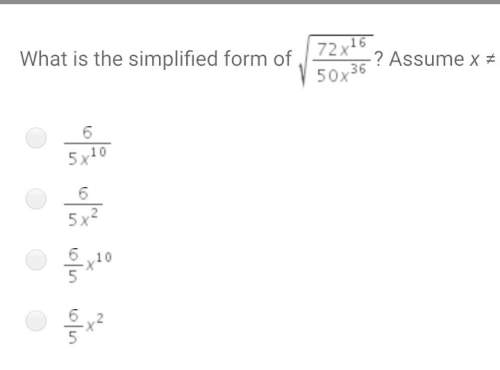
Mathematics, 04.11.2019 22:31 rakanmadi87
One column of numbers consists of 28, 42, and 14. when the digits of the numbers are added together, the result is 2 + 8 + 4 + 2 + 1 + 4 = 21, and when the digits of 21 are then added together, the end result is 2 + 1 = 3. if the same process is performed on the numbers in a second column, what can be concluded?
a. if the end result from the second column is also 3, then the sum of the numbers in the first column is not equal to the sum of the numbers in the second column.
b. if the end result from the second column is not 3, then the sum of the numbers in the first column is equal to the sum of the numbers in the second column.
c. if the end result from the second column is also 3, then the sum of the numbers in the first column is equal to the sum of the numbers in the second column.
d. if the end result from the second column is not 3, then the sum of the numbers in the first column is not equal to the sum of the numbers in the second column.

Answers: 1


Another question on Mathematics


Mathematics, 21.06.2019 20:00
Worth 30 points! in this diagram, both polygons are regular. what is the value, in degrees, of the sum of the measures of angles abc and abd?
Answers: 2

Mathematics, 21.06.2019 21:50
Aline passes through the point (–7, 5) and has a slope of 1/2 which is another point that the line passes through?
Answers: 3

Mathematics, 21.06.2019 22:30
Which of the following would be a reasonable estimate for the weight of a pencil? a. 1 × 10^-20 lb b. 1 × 10^20 lb c. 1 × 10^2 lb d. 1 × 10^-2 lb
Answers: 1
You know the right answer?
One column of numbers consists of 28, 42, and 14. when the digits of the numbers are added together,...
Questions












Mathematics, 20.01.2020 23:31











